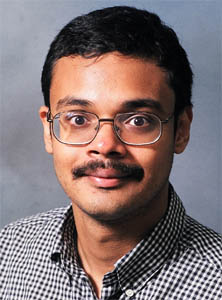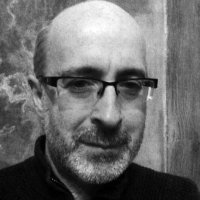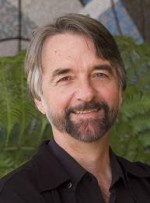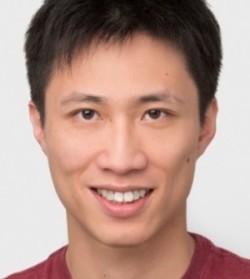
Ravi Ramamoorthi, Professor at UCSD:
Ravi Ramamoorthi's research group develops the theoretical foundations, mathematical representations and computational models for the visual appearance of objects, digitally recreating or rendering the complexity of natural appearance. His research program cuts across computer graphics, computer vision and signal processing with applications in sparse reconstruction and frequency analysis, Monte Carlo importance sampling, interactive photorealistic rendering, acquisition and representation of data-driven appearance, volumetric scattering, animation, image and video editing, light-field cameras, physics- based vision and lighting-insensitive recognition. This work has led to more than 100 publications, including more than 50 SIGGRAPH or TOG papers, and has been recognized in 2005 by a Sloan Fellowship and an NSF CAREER award, and in 2007 with an ONR Young Investigator Award and the ACM SIGGRAPH Significant New Researcher Award. More recently, he received a Presidential Early Career Award in a White House ceremony in Dec 2008, and an Okawa Foundation Award in 2011. In Spring 2016, he was appointed the inaugural holder of the Ronald L. Graham Chair of Computer Science.

Thomas Nonn, Manager of Computational Imaging at Lytro:
Thomas joined Lytro in 2013 as the Manager of Computational Photography and is - together with his group - responsible for the design, development and maintanance of the light-field imaging pipeline. In 2015 Lytro pivoted to light field cinema and VR/AR with a focus on large scale production systems. Since the pivot he has managed the Computational Imaging team with the responsibility of developing the core algorithms for depth, optical flow, camera tracking, segmentation and more. As manager he was intimately involved with product and tool development.

Harlyn Baker, Electronic Visualization Laboratory at University of Illinois Chicago:
Harlyn Baker worked in the field of computer vision for about three decades. Originally studying stereo recognition, he co-developed Epipolar Plane Image Analysis, a widely used and important representation within the light field research community. Applying 3D imaging analysis, he later analyzed applied problems in archeology as well as medical imaging. Leaving university he worked as a researcher for multiple companies, including Interval Research, TYZX and Hewlett-Packard focusing on 3D reconstruction from the algorithmic perspective as well as the hardware side. He formed his current consulting business EPIImaging LLC for Light Field imagery, and joined teams at Heidelberg University and the University of Illinois at Chicago/University of California, San Diego, supporting light field research. His focus throughout has been on exploiting massively redundant light field imaging for communication, visualization, and spatial understanding.

Tsung-Yi Lin, Cornell NYC Tech:
Tsung-Yi Lin works as a PhD student at Cornell NYC Tech working with Serge Belongie and James Hays. Before that, he studied at the UCSD. His research interests are in Computer Vision, particularly in learning representations for cross-view image matching. As an intern at Microsoft Research he helped building the Microsoft COCO dataset for object detection and image captioning. Later, he co-founded the Common Visual Data Foundation, a non-profit organization with the mission to enable open community-driven research in computer vision through the creation of academic datasets and corresponding competitions.
